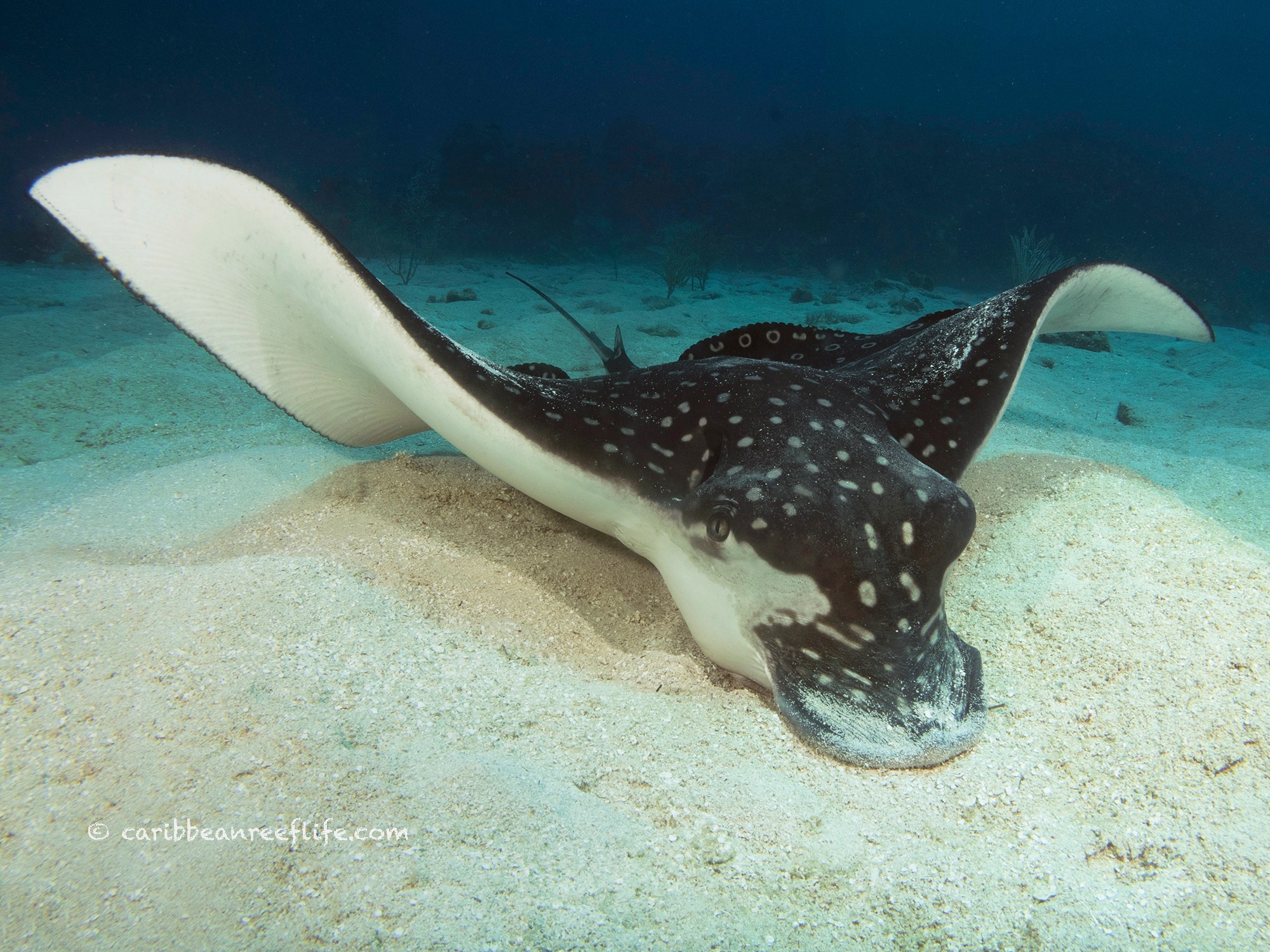3 Cool Facts about Spotted Eagle Rays
Diving is amazing on Roatan no matter what time of year, but let’s be honest, we all really look forward to eagle ray season. Nothing can make a dive like seeing a spotted eagle ray (or three!) glide gently along the reef, or watching them dig through the sand with their noses for food. We know you already like these cool creatures, but to make you fall even more in love with them, here are 3 Cool Facts about spotted eagle rays!
Eagle ray patterns are like fingerprints
Like human fingerprints, each eagle ray’s back pattern is unique. That’s why when conservationists and scientists are putting together eagle ray population censuses in an area, they’ll ask for photos to do what’s called a “natural tag”. No two eagle rays have the same back pattern, (although to the untrained eye, they all look very similar), allowing this to be a useful, and non-invasive, model for identification.
Photo by Caribbean Reef Life
Eagle rays can jump through the air
Have you ever been on the beach watching the Roatan sunset and seen a big splash? More often that not, those are eagle rays jumping through the air. Although eagle rays don’t jump into giant groups like the mobula rays off of Baja California, they have been known to jump onto boats, even accidentally killing a woman once when they landed on her.
Scientists aren’t 100% sure the reason why rays jump. Some speculate that they are females trying to get away from males (bye, Felipe!) and some think they are trying to get rid of parasites on their body. Either way, it’s a cool thing to witness.
Eagle rays lay eggs, but also carry their eggs to term
No doubt you guys have seen the amazing video of the ray giving birth at the zoo! While eagle rays lay eggs, they’ll actually carry the eggs inside of them until the babies, called pups, are born ready to swim. Eagle rays only carry about 4 pups at a time, which is why their numbers are threatened all around the world because of their slow reproduction, decimation of food sources due to overfishing, and being hunted in some places.
So there you have it, 3 Cool Facts About Eagle Rays! We hope that you all can make it down to Roatan soon so you can see these wonderful creatures, and everything else that Roatan underwater has to offer, in person! Don’t forget to also support the Roatan Marine Park (and your conservation organizations back home) to make sure that the spotted eagle ray is around for years to come.

